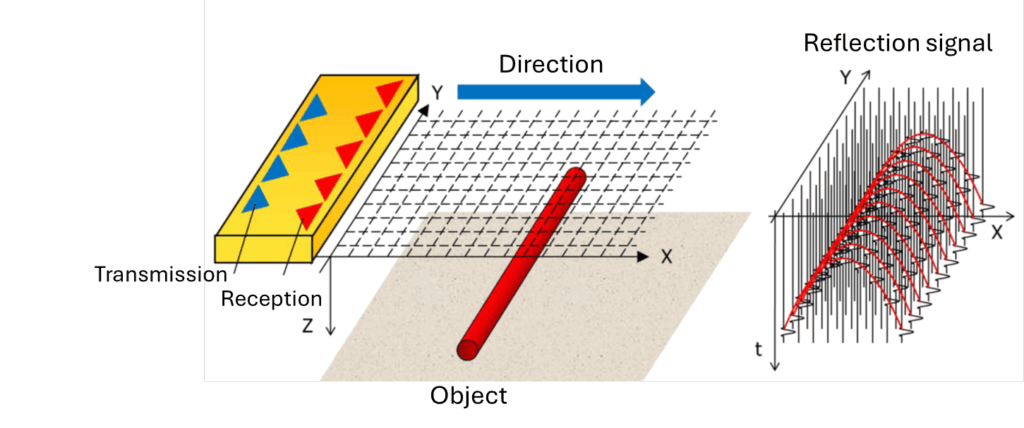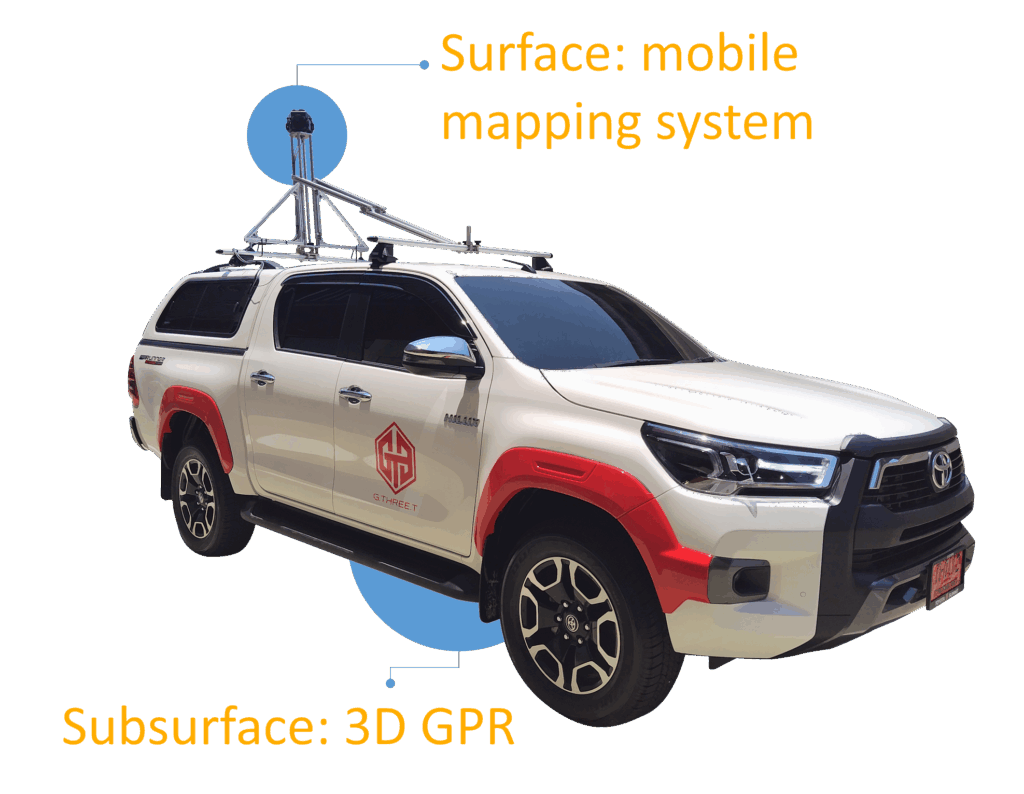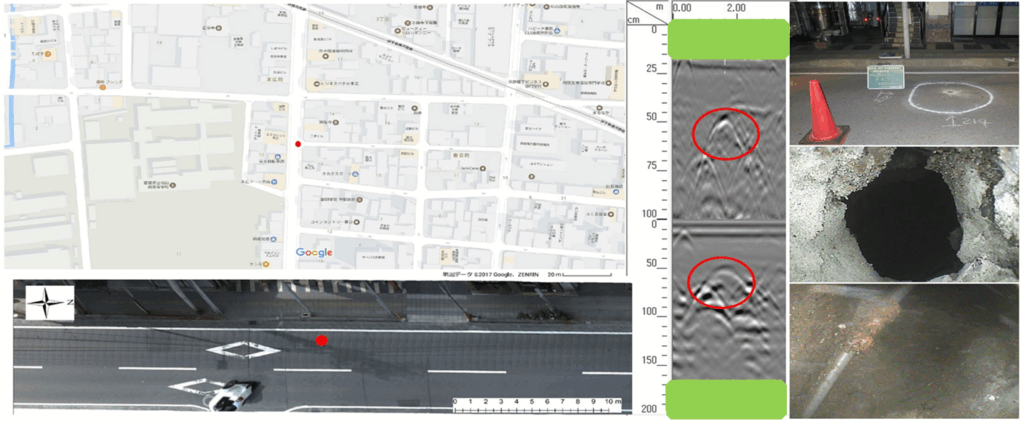What is Ground Penetrating Radar (GPR)
Ground Penetrating Radar (GPR) is a tool that helps us “search” underground without digging. It can detect pipes, cables, voids, concrete thickness, or other objects under the surface. This makes it very useful for inspection and maintenance, especially for roads, sidewalks, and underground utilities.
At EJEC Thailand, in partnership with Canaan Geo Research, we use GPR as part of our inspection & maintenance services. GPR helps us check underground conditions for preventive maintenance and repair planning more safely and efficiently.
- What is Ground Penetrating Radar (GPR)
- How GPR helps road maintenance
- Ground-penetrating radar Mobile Mapping System 3D (GMS3)
What is Ground Penetrating Radar (GPR)
Ground Penetrating Radar (GPR) is a non-destructive method used to detect and visualize objects, changes, or structures under the surface by using electromagnetic waves.
How GPR works
GPR works by sending high-frequency radio waves into the ground. When these waves hit something with a different material (like metal, pipes, water, or void), they reflect back. The GPR receiver records these reflections, creating a map of what’s below the surface.


How GPR helps road maintenance
- Detects cavities and sinkholes early: GPR can find hidden voids, weak spots, or underground cavities under roads before they become dangerous.
- Prevents accidents: By spotting potential road collapses or sinkholes early, it helps protect drivers and pedestrians.
- Saves repair costs: Early detection means small problems can be fixed before they turn into expensive repairs.
- Supports preventive maintenance: Helps engineers plan road repairs more effectively, keeping roads safe and durable.
Ground-penetrating radar Mobile Mapping System 3D (GMS3)
When it comes to the large inspection area, GPR can work with other survey tools to get better visual results to locate objects/voids underground more efficiently.
The Technology is called "Ground-penetrating radar Mobile Mapping System 3D (GMS3)". It combines surface data from a 360° camera system for Mobile Mapping System and subsurface data from 3D GPR for underground conditions.

By integrating surface data (Mobile Mapping System) and subsurface data (3D GPR), we can visualize and use information more easily. This helps us plan future road maintenance better and cover more problem areas.

From the image above, we can accurately locate the position of the voids, showing the location on Google Maps, the road surface image, and the GPR signal image.
For more information, please visit:
https://ejec-thailand.com/maintenance/inspection-tools/
https://canaan-geo.jp/
